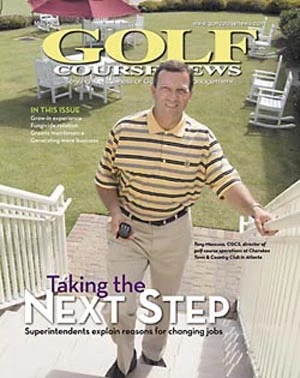[During my 25-plus-year career as a golf course developer and consultant, I’ve interviewed and specifically challenged the teaching techniques of more than 100 golf professionals and assistants applying for jobs with my firm’s clients, and independently audited a similar number of private lessons and clinics.]
The art and science of golf instruction should: bring waves of new players to the game, but doesn’t; elevate the quality of play throughout the country, but doesn’t; drive golf professionals’ careers, but doesn’t; and be universally respected as a unique discipline, but isn’t.
The evidence to support these premises isn’t difficult to find. For example, when I was serving as the executive director of the Metropolitan Golf Association during the 1970s, it generally was understood that there might be fewer than a dozen guaranteed effective golf instructors throughout the more than 400 golf courses in the New York Metro area – a situation that hasn’t changed appreciably today.
Think about it. There are more than 26 million golfers throughout the country and, maybe, there are 1,000 or 2,000 guaranteed effective golf instructors. This translates to about one proven golf instructor for every 18,000 golfers. This is primarily why 3 million players leave golf every year. The industry is committed to bringing more players to golf, but not committed to bringing more and better teachers to the game. Do we not have the cart before the horse?
Without an increasing number of qualified golf instructors, player development will continue to stagnate ad infinitum. Generate the teachers, and the players will follow. How can this best be done?
Redefine the job
The implied career job description of the golf professional should be restructured to reposition the responsibility for teaching the game as the primary objective throughout present and future generations of professionals’ careers. Improved teaching will better the game and nurture a golf professional’s career like nothing else. Respected teachers will always control their career destiny.
Once restructured, the golf professional’s career mission statement would become a beacon for those expecting to pursue meaningful golf professional careers. With the beacon lighting the way, aspiring golf professionals soon will learn that only by using better visual technology, teaching macroprinciples before microprinciples and by developing an absolute passion for teaching golf will they be able to develop the skills needed to become effective teachers.
Schools present opportunity
It will take time for golf professionals to accept and grow into the practice of priority teaching. But can anything be done to speed the process? Fortunately, yes. As leading golf organizations are now saying, by focusing golf instruction on the millions of students within the country’s school systems, both the player development process and the body of golf instruction would be quickly energized. Why? Because the excitement of filling new teaching jobs to bring the game of golf to a vast young and receptive audience would carry the day.
To confirm this premise, some enterprising/aspiring golf professionals are already preparing to gain access to the California school systems, i.e., preparing to be hired as PGA/LPGA qualified golf coaches in the same manner as football, basketball and baseball coaches are hired and retained. All fringe benefits, including tenure and pension programs that apply to state employed teachers, similarly would apply to golf coaches with classroom responsibility, or full-time instruction schedules.
Accordingly, it would be prudent for the PGA and LPGA to present workshops that would educate members and other interested parties (for a projected new school class of membership that would likely double overall PGA/LPGA memberships in the coming years) to the opportunities school systems present and the process of how to qualify for these evolving jobs through applications for state teaching licenses.
A numbers game
Baseball is an example of one of several sports that produces almost unlimited statistics; i.e., batting averages, RBIs, ERAs, wins/loses, saves and the number of innings pitched are just a few. Baseball would never have earned its mantle as America’s pastime without having taken full promotional advantage of the numbers it generates.
Golf is as much a numbers-generating game as baseball, football or basketball. Yet, it has done little, if anything, at the vast amateur level to take advantage of its numerical environment. It’s time for this to change.
Data capture
The first thing golf would have to do is establish a mechanism to capture scoring and performance data. The individual player stat sheet on the facing page is a suggested approach to provide this capability.
Once in play, the stat sheet offers unlimited opportunity as to how it might be best used. For example, the stat sheet would be used within an interactive e-mail exchange network between golf instructors and their students who would input per round playing data for the instructor to analyze, respond to via e-mail and plan future lessons around.
Then, the fun really begins. Why couldn’t golf clubs/courses generate top-five performance profiles (for each of the six player categories) from stat sheet data much in the same way, in part, as the PGA Tour does weekly and publish the results in their newsletters and/or Web sites? (Non-students could participate via a simplified data capture mechanism.) This focus would motivate players to improve their skills and spark more players to take instruction, while at the same time increasing the overall enjoyment of the game.
Career promotion
Finally, we can’t overlook how the use of the stat sheet would immeasurably advance the careers of golf instructors. As my November 2004 column suggested, golf course superintendents should develop personal career Web sites to better advance their careers. This concept also aptly applies to golf professionals’ careers. A Web-site link would be the ideal way to present a professional’s teaching credentials and success. Stat sheet data, supported by almost endless graphic possibilities (see two sample graphs on facing page), could be made to dance within Web site presentations.
The engine that will drive golf to realize its long-range goals is quality golf instruction because only better teaching will generate more players, which, in turn, will generate more rounds, greater merchandise sales, larger TV audiences and the development of more golf courses.
The good news is the opportunity to upgrade the quantity and quality of golf instruction is virtually unlimited. GCN
Jim McLoughlin is the founder of TMG Golf (www.TMGgolfcouncel.com), a golf course development and consulting firm and is a former executive director of the GCSAA. He can be reached at golfguide@adelphia.net. His previous columns can be found on www.golfcoursenews.com.
|

Explore the May 2005 Issue
Check out more from this issue and find your next story to read.
Latest from Golf Course Industry
- From the publisher’s pen: Foggy intrigue
- USGA releases Water Conservation Playbook
- Vilamoura Golf courses awarded GEO Certified status
- GCSAA’s Health in Action 5K/2K reaches fundraising goal
- Landscapes Golf Management to participate in data analyzation initiative
- Reel Turf Techs: Carl Michael
- Atlanta Athletic Club approves funding for master plan
- Maximizing Cultural Practices and Agronomic Benefits with Minimal Surface Disruption








